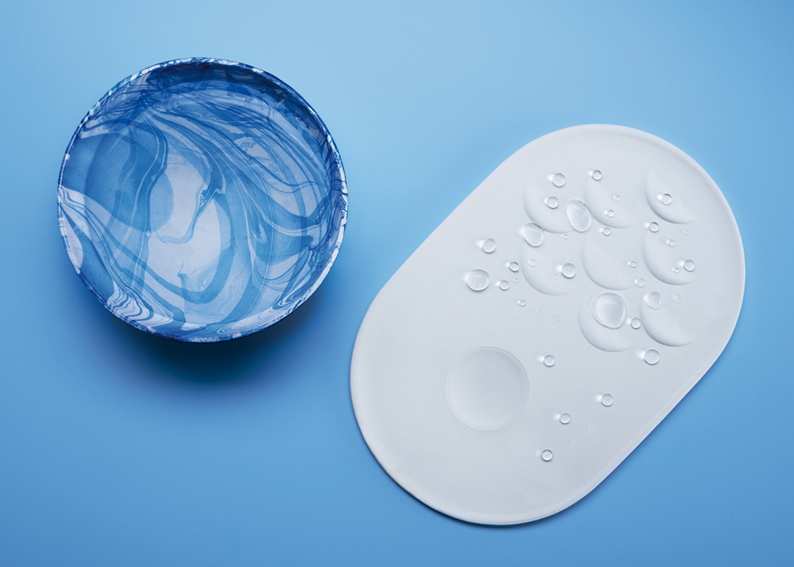These plates and dishes made of cellulose by Swedish design studio Tomorrow Machine have a special self-cleaning coating that means they never need washing up.
Tomorrow Machine and research company Innventia were asked by the Swedish Forest Industries Federation to envision uses for cellulose harvested from Swedish forests in the year 2035.
The prototype tableware was made to showcase the qualities of a new cellulose-based material developed by Innventia, which is light but strong and can be moulded into double-curved surfaces.
"The product not only saves resources during the manufacturing process, but also over its full life-cycle, not requiring water and chemicals to be kept clean," claimed the designers.
The cellulose pulp is first made into a sheet, which is then heat pressed in a mould. "The material becomes as hard as a regular ceramic product, but with the advantages that it is lightweight and won't crack or break in case it's dropped," Hanna Billqvist of Tomorrow Machine told Dezeen.
The coating is a new technology developed by KTH Royal Institute of Technology in Stockholm, which mimics the surface of a lotus leaf to create a surface that's resistant to dirt and water. "It is real but a very new technology that is still being developed, so it’s not ready for the industry yet," explained Billqvist.
"KTH are using a process called Rapid Expansion of Supercritical Solutions (RESS) to make the surface superhydrophobic," she said. "A wax is dissolved in carbon dioxide at high pressure and temperature, and then sprayed onto the surface to be treated."
The designers specified a marbling technique to decorate the cup, selecting a cobalt blue reminiscent of the glaze used on traditional porcelain and ceramic tableware.
Based out of Stockholm and Paris, Tomorrow Machine comprises Billqvist and Anna Glansén, and specialises in packaging, product and food concepts. "Our vision as designers is to build a better world through research, new technologies and intelligent material," they said. "We believe in looking at science from a creative point of view to shape the innovations of tomorrow."
Photographs are by David Axelsson.

